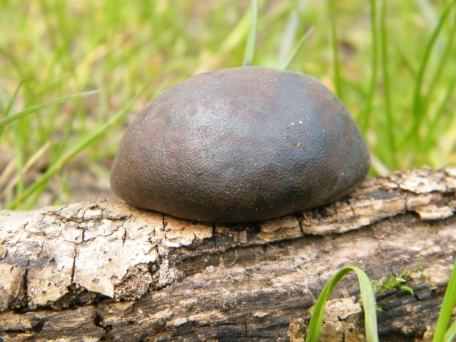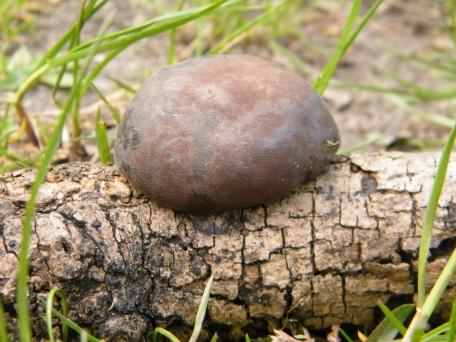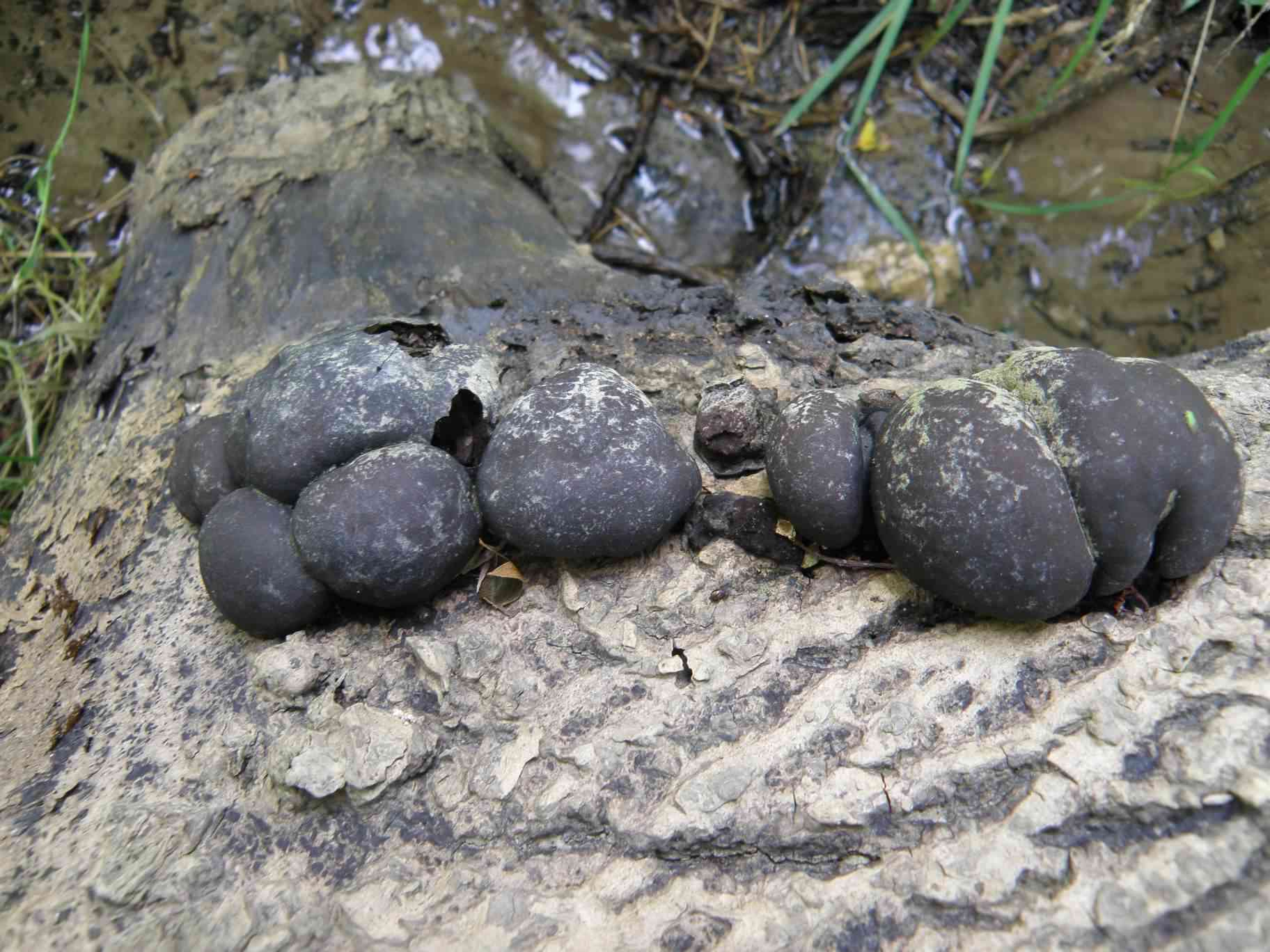
Photo ©2015–

Photo ©2015–

Photo ©2009 J Milburn
King Alfred's cakes - Daldinia concentrica
Family - Xylariaceae
Also known as - Cramp balls, Carbon balls, Coal fungus
Typically 2–8cm across, King Alfred's cakes are a hard, inedible spherical saprobic fungus initially reddish–brown in colour becoming a shiny black as it matures, it can look and feel like a spherical piece of charcoal. If cut open the body of the fungus is a purple colour with dark concentric rings according to the age of the specimen in the same way a trees age is shown by growth rings in the wood. Usually seen most often on Ash and Beech but also on Oak, it is common and widespread in Britain and Ireland, Europe, North America and in many other temperate countries in wooded areas on rotting wood and downed trees. The fruiting body has no stipe but is attached to its host by a broad, flat area underneath the fruiting body, the spore–bearing surface is the outside surface with spores leaving a darker spore print area on the wood surface around the fungus. Typically 2–8cm (0.8–3.2in) across, but several in a gregarious clump may merge to form a much larger compound growth. Appearing mid summer to autumn, however old dried out bodies sometimes will be found.
"Cramp Balls" is an old name referring back to a time when the plant was carried around in a person's pocket or in the armpit as a cure for cramp. The common name "King Alfred's cakes" derives from a popular story about King Alfred fleeing a battle and taking refuge in an old woman's house. The woman, unaware he was the king, left him in charge of some cakes in the oven, he fell asleep, and the cakes burned. The old woman scolded him for being lazy, later she was sorry about having "raked him over the coals" when she found out he was the King!
Traditionally Daldinia concentrica has apparently been used as tinder for fire–lighting with the black variety serving this purpose better as it is not as dense as the brown form. It burns slowly, rather like a charcoal briquette, but with a very pungent smoke. Once lit pieces can be broken off and transferred to a tinder bundle to create an open flame. caterpillars of the moth Harpella forficella have been found to eat this fungus, however in the UK this moth is quite rare. Described in the late 18th century by British mycologist James Bolton, who named it Sphaeria concentrica, it was transferred to the genus Daldinia in the 1860's by Vincenzo de Cesati and Giuseppe De Notaris. Daldinia concentrica is the type species of its genus.
BCP do not advise or recommend that King Alfred's cakes – Daldinia concentrica is eaten or used as an herbal remedy. King Alfred's cakes are not edible.
 Photo ©2015– |
 Photo ©2015– |
 Photo ©2009 J Milburn |
| Click any photo for a larger image | ||
Site design ©1999– Brickfields Country Park - Privacy -